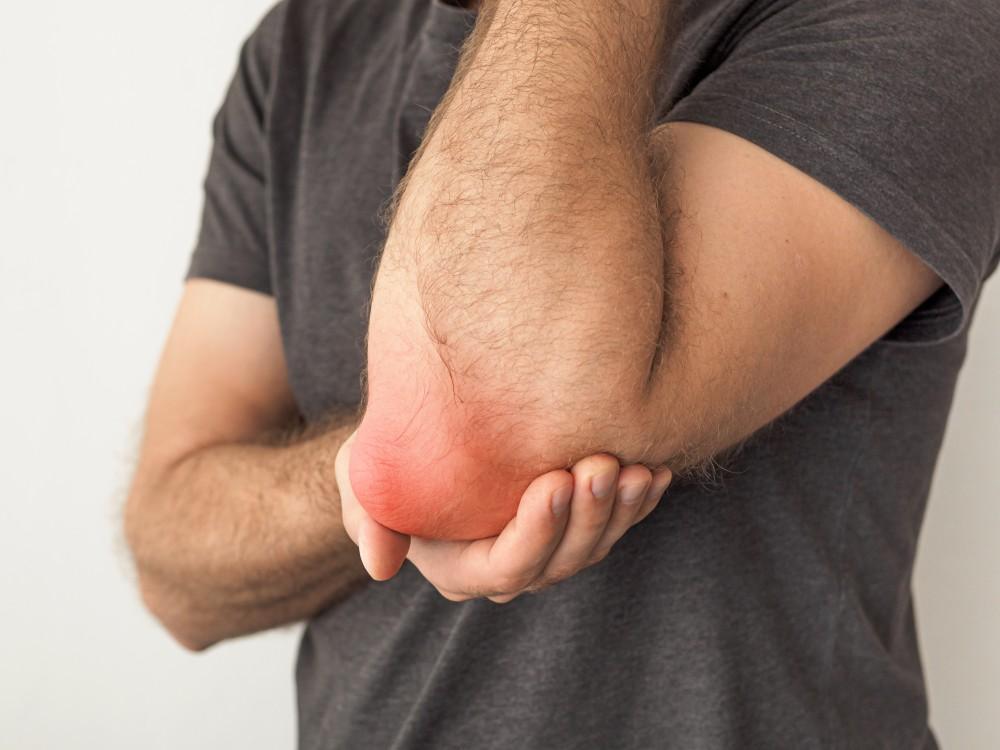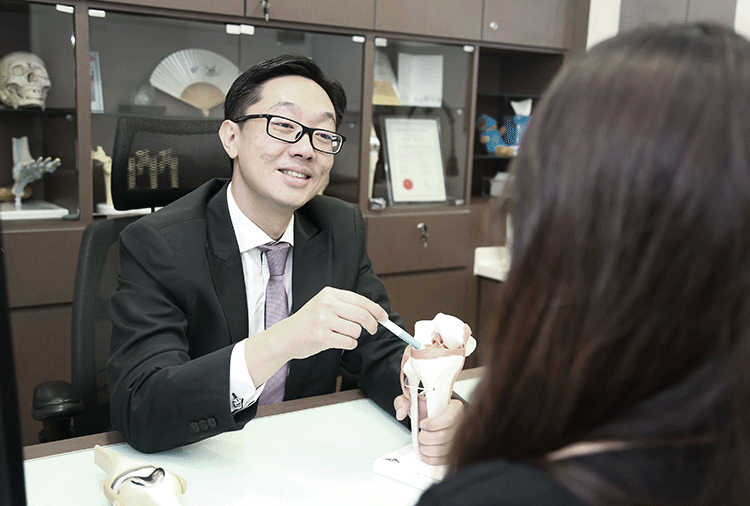Bursitis is a common condition that can affect anyone, regardless of age or activity level. It occurs when the bursae, the small fluid-filled sacs that cushion bones, tendons, and muscles near joints, become inflamed. This inflammation can lead to pain, swelling, and limited movement, making everyday activities challenging.
What Is Bursitis, And Why Is Treatment Important?
Bursitis is the inflammation of the bursae, small fluid-filled sacs that act as cushions between bones, tendons, joints, and muscles. These sacs help reduce friction and allow for smooth movement. When a bursa becomes inflamed, it can cause pain, swelling, and restricted movement in the affected area.
What Are The Causes And Risk Factors Of Bursitis?
Causes
- Repetitive Motion – Activities involving repetitive movements, such as painting, gardening, playing musical instruments, or certain sports, can irritate and inflame the bursae.
- Prolonged Pressure – Leaning on elbows, kneeling for long periods, or resting weight on specific joints can exert pressure on the bursae, leading to bursitis.
- Injury – Direct trauma or injury to a joint, such as falls, bumps, or blows, can cause bursitis.
- Infection – Bursae can become infected, leading to septic bursitis. This may occur from a cut, scratch, or insect bite that introduces bacteria into the bursa.
- Underlying Conditions – Conditions like rheumatoid arthritis, gout, or other inflammatory diseases can increase the risk of bursitis.
Risk Factors
- Age – Bursitis is more common in older adults due to the body’s diminished ability to repair tissues with age.
- Occupation – Jobs involving repetitive movements or prolonged pressure on joints, such as carpentry, plumbing, or athletics, increase the risk of developing bursitis.
- Hobbies – Activities requiring repetitive motion or pressure on certain joints, such as gardening, painting, or playing sports, can increase the likelihood of bursitis.
- Health Conditions – Conditions like diabetes, rheumatoid arthritis, and gout can predispose individuals to bursitis.
- Improper Posture – Poor posture can place additional stress on certain joints and bursae, leading to inflammation.
- Previous Injury – A history of joint or tendon injuries can increase the risk of bursitis in the affected area.
What Are The Common Symptoms Of Bursitis?
Bursitis manifests through a variety of symptoms, which can significantly impair daily functioning and quality of life. Recognising these symptoms early can help in seeking timely treatment and preventing further complications.
- Pain – The most common symptom, often sharp and intense, is localised to the affected joint and can worsen with movement or pressure.
- Swelling – The affected area may become swollen, making it visibly larger and more tender to touch.
- Stiffness – Movement in the affected joint may become limited and painful, leading to stiffness and difficulty performing everyday tasks.
- Redness and Warmth – The skin over the inflamed bursa may appear red and feel warm to the touch, indicating inflammation.
- Tenderness – The area around the inflamed bursa is often tender, making it painful to touch or move.
- Fever (in septic bursitis) – If the bursitis is caused by an infection, it may be accompanied by fever and other signs of infection, such as chills and general malaise
How Is Bursitis Diagnosed?
Proper diagnosis is crucial for effective treatment and relief from symptoms. The diagnostic process involves a thorough clinical examination and a range of diagnostic tests to confirm the condition and identify any underlying causes.
Clinical Examination
- Medical History – The doctor will review the patient’s symptoms, including the onset, duration, and nature of the pain, as well as any recent activities, injuries, or repetitive movements that might have contributed to the bursitis.
- Visual Inspection – The affected area will be inspected for signs of swelling, redness, or warmth. The doctor will observe the joint for any visible changes or deformities.
- Palpation – The doctor will gently press on the area around the joint to check for tenderness, swelling, and increased warmth. Palpation helps pinpoint the location of inflammation and assess the degree of discomfort.
- Range of Motion – The doctor will evaluate the joint’s range of motion to determine if movement is restricted or painful. This assessment helps identify the impact of bursitis on joint function.
- Functional Tests – The patient may be asked to perform specific movements or activities to evaluate how bursitis affects daily functions and to assess pain levels during these activities.
Diagnostic Tests
- Ultrasound – Ultrasound imaging provides real-time images of the bursae and surrounding soft tissues. It helps visualise inflammation, fluid accumulation, and other abnormalities within the bursae.
- MRI – Magnetic Resonance Imaging (MRI) offers detailed images of the soft tissues, including the bursae, tendons, and muscles. It is useful for assessing the extent of inflammation and detecting any associated damage.
- X-rays – X-rays are typically used to rule out bone abnormalities or conditions that might mimic bursitis symptoms, such as fractures or bone spurs. They do not directly show the bursae but can help identify related issues.
- CT Scan – A Computed Tomography (CT) scan may be used in some cases to provide detailed cross-sectional images of the joint and surrounding structures, especially if additional details are needed.
- Joint Aspiration (Arthrocentesis) – This procedure involves withdrawing fluid from the affected bursa with a needle to analyse the fluid for signs of infection, inflammation, or other abnormalities that could be contributing to bursitis symptoms.
- Blood Tests – Blood tests might be ordered to check for markers of inflammation or underlying conditions, such as rheumatoid arthritis or infection, which could be contributing to the bursitis.
What Are The Bursitis Treatment Options?
Bursitis is an inflammation of the bursae, the small fluid-filled sacs that cushion the joints. Treatment aims to relieve pain, reduce inflammation, and restore normal function. Options vary depending on the severity and cause of the bursitis but generally include:
Rest and Activity Modification:
- Rest – Avoid activities that exacerbate symptoms to give the bursa time to heal.
- Activity Modification – Modify or avoid repetitive motions that stress the affected joint.
Ice Therapy:
- Application – Apply an ice pack to the affected area for 15-20 minutes several times a day to reduce swelling and numb pain.
Medications:
- Nonsteroidal Anti-Inflammatory Drugs (NSAIDs) – Over-the-counter NSAIDs like ibuprofen or naproxen can help reduce pain and inflammation.
- Acetaminophen – Provides pain relief if NSAIDs are not suitable.
- Corticosteroids – Oral or injected corticosteroids may be prescribed for severe inflammation or if other treatments are ineffective.
Physical Therapy:
- Exercises – A physical therapist can design exercises to strengthen the muscles around the joint, improve flexibility, and reduce strain on the bursa.
- Stretching and Strengthening – Targeted stretches and strength-building exercises can help prevent future episodes.
Joint Aspiration (Arthrocentesis):
- Procedure – A needle is used to withdraw excess fluid from the bursa to relieve pressure and reduce inflammation.
- Analysis – The fluid can be analysed to determine if there is an infection or other underlying issues.
Injections:
- Corticosteroid Injections – Corticosteroids can be injected directly into the bursa to provide rapid and effective relief from inflammation and pain.
Surgery:
- Indications – Surgery may be considered for chronic or severe cases that do not respond to other treatments.
- Procedure – Surgical options can include removing the inflamed bursa or repairing any underlying structural issues.
Lifestyle and Ergonomic Adjustments:
- Workplace Ergonomics – Adjusting workstations and using proper techniques can help prevent repetitive strain injuries.
- Supportive Devices – Using braces or pads can reduce stress on the affected joint and support proper alignment.
Prevention Strategies For Bursitis
Commonly affected areas of bursitis include the shoulder, elbow, hip, and knee. Effective prevention strategies focus on reducing inflammation, managing symptoms, and preventing future episodes. Here are some strategies:
- Use proper techniques and body mechanics during activities and exercises to reduce stress on the bursa. This includes correct posture and movement patterns.
- Incorporate exercises to strengthen the muscles around the affected joint. Strong muscles provide better support and reduce strain on the bursa.
- Perform regular stretching exercises to maintain flexibility in the muscles and tendons around the joint. Include stretches for the major muscle groups involved.
- Make ergonomic adjustments at work and home to reduce repetitive strain on the joints. Use ergonomic tools, adjust the height of workstations, and take frequent breaks.
- Always perform a thorough warm-up before engaging in physical activities, especially those involving repetitive motions or heavy lifting. Cool down and stretch after activities to prevent stiffness and reduce the risk of injury.
- Avoid activities that place excessive or repetitive stress on the bursa. Take regular breaks during repetitive tasks and use proper techniques to minimise strain.
- Wear shoes that provide adequate support and cushioning for your feet. Proper footwear can help reduce stress on the joints and bursa.
- Maintain a healthy lifestyle by eating a balanced diet, staying hydrated, getting enough sleep, and managing stress. These factors contribute to overall musculoskeletal health and reduce the risk of injury.
- Incorporate a variety of activities into your fitness routine to avoid overuse injuries. Cross-training helps balance muscle development and reduces repetitive strain on specific joints.
- Schedule regular check-ups with a healthcare professional to monitor joint health and address any underlying issues that may contribute to bursitis. Early detection and intervention can help prevent progression and improve treatment outcomes.






